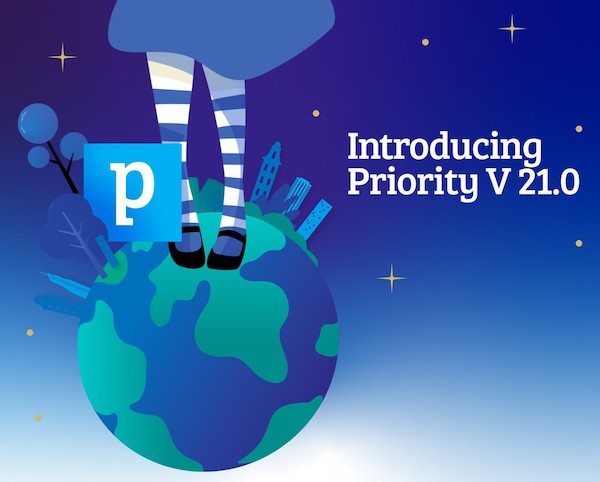Manufacturers are using IIoT data they gather with the SAP Enterprise Asset Management platform to provide predictive maintenance services to customers and to sell machine uptime.
Industrial IoT data has helped open up manufacturing assets and systems, leading to more productivity and efficiency. But using the data effectively is no easy task.
SAP Enterprise Asset Management is designed to help manufacturing organizations deal with the explosion of industrial IoT (IIoT) data, according to Hala Zeine, SAP president of digital supply chain.

“This is what we have seen in the past few years, and especially last few months, around connecting assets,” Zeine said. “In the past, we had plants and were worried about the equipment that we had in the plants — how much are they depreciating, how much are they costing in servicing? Then we connected them to give information about the machines, like what you are supposed to do to the machine. And then, with IoT, we gave it a voice, and now it could kind of speak to us and say ‘How am I feeling right now?'”
SAP Enterprise Asset Management is built on SAP Data Hub, a platform that enables organizations to integrate and manage data from a variety of sources and make it useful for business analysis applications. The platform can integrate asset data with system information in enterprise systems, Zeine said.
“For example, if you already have the asset information in ECC or S/4HANA, it links and takes that data structure,” she said. “It also has interfaces with various equipment providers in a lot of different file formats that your equipment-makers provide you with.”
Sensor data has enabled companies to improve the efficiency and productivity of machines using capabilities such as predictive maintenance, or predicting when a part will fail before it happens. But SAP Enterprise Asset Management helps to go beyond this, giving companies an opportunity to provide employees with better insights and their customers with new services.
Selling compressed air as a service
Kaeser Kompressoren, a manufacturer of industrial compressors, has been able to turn air into money with the data management capabilities of SAP Enterprise Asset Management.
Kaeser Kompressoren, based in Coburg, Germany, is a well-established industrial company that makes compressors for manufacturers, primarily for the automobile industry.
The company has had streams of data coming in from IIoT sensors on its compressors for years, but it was useless without a way to manage it and use it in business applications, according to Falko Lameter, CIO of Kaeser Kompressoren.
“With predictive maintenance, we have [a control center] where you can constantly monitor the KPIs for customers,” Lameter said. “And we can do a monthly settlement — for instance, a monthly energy report — for the customer and so on.”
Because there are considerable energy costs to operate the compressors, some customers have opted for Kaeser’s compressed air as a service rather than purchasing the compressors outright, Lameter said.
Real-time streaming data from sensors also helps Kaeser monitor the quality of the compressed air used by customers, such as hospitals and breweries, which depend on germ-free air. Having clean, quality compressed air as a service available helps its customers reduce costs for energy and service maintenance, Lameter explained. And it helps arm Kaeser’s global sales and service organization with better information about when to visit customers and what to talk about.
“This is big money for us because we have a global sales and service organization which really costs money. And if you can have a better and more efficient process for this, then there’s a competitive edge for us,” Lameter said. “The other thing is that we can offer customers better products, more intelligent products.”
Servitization a trend, but uptake is unclear
The question of whether companies will take up these new business models in large numbers is an open one, however, in part because the new models haven’t been built to scale yet.
“Do the customers really like this or do they feel they’re being taken to the cleaners?” said Cindy Jutras, president of ERP analysis firm Mint Jutras. “I don’t know if it’s good or bad for customers, but it will be interesting to find out if it’s going to be an option or if customers will be forced into [an as-a-service model].”
Plus, it’s hard to say how quickly or how widespread servitization, a growing trend to sell services rather than products, is in manufacturing, according to Jon Reed, co-founder of the ERP analysis and news site Diginomica.
“A lot of manufacturers are at least looking at this notion that the relationship and the data they’re gathering is maybe more important in the long run than the stuff they’re selling,” Reed said. “It seems quite reasonable to think that that will take off.
“But, at the same time, you have to be careful not to over-generalize because when you talk about manufacturing, there’s a ton of micro-verticals, and supply chains within that [are not suited for servitization]. For example, you might be a manufacturer that supplies parts for very specific vehicles and GM might be your main client.”
Nevertheless, hot-button use cases such as predictive maintenance can serve as triggers for next-generation technologies in manufacturing, Reed explained.
“[Manufacturers] would love to know when their super-expensive equipment is going to break and anticipate that and service it,” he said. “And it would be great if someone could come in and say, ‘We can provide a service around that that’s going to give you that heads-up and we’re going to integrate it.'”
Reed pointed to SAP Enterprise Asset Management as an example of a vendor reducing the technical barriers to get there.
“Are they correct in doing that? Absolutely,” he said. “Is this going to take off tomorrow? Probably not across the board, but leading companies will try it.”




